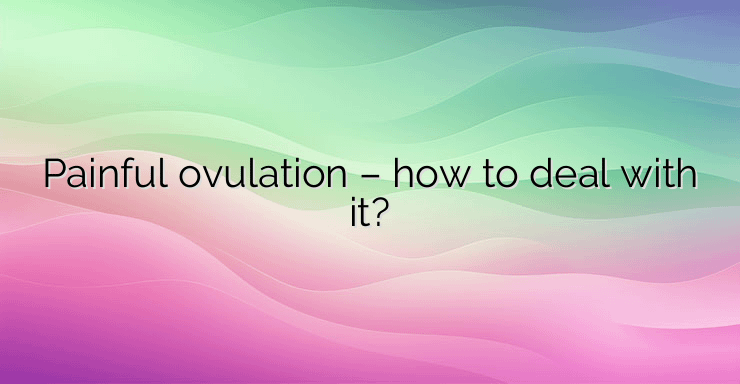Although not felt by most women, ovulation can cause discomfort or even pain for some. However, these pains during ovulation are nothing to worry about and have no effect on fertility. Ovulation often does not cause manifestations in most women. The ovarian cycle is divided into three phases: Follicular phase – under the action of the follicle-stimulating hormone – FSH, several ovarian follicles mature, but only one will complete its development – this is the so-called “dominant” follicle. As the follicle grows, the secretion of estrogen increases and causes a massive release of another hormone – luteinizing hormone – LH; Ovulation: under the influence of this LH peak, the fluid tension in the follicle increases. The follicle eventually ruptures and releases the oocyte, which is immediately sucked up the edges of the fallopian tube; Luteal phase, or post-ovulatory phase: if the egg is fertilized by a sperm, it will normally implant in the lining of the uterus and pregnancy occurs. If she is not fertilized, the sudden drop in hormones causes small hemorrhages in the uterine lining, which, under the action of hormones, has thickened to accommodate the eventually fertilized egg. Menstruation occurs when the blood vessels in the mucous membrane rupture. With an average menstrual cycle of 28 days, ovulation occurs on the 14th day of the cycle – 14 days after the start of menstruation. The luteal phase lasts an average of 14 days, with a shorter cycle, ovulation occurs earlier – for example, on the 10th day in a 24-day cycle, and accordingly later in a longer menstrual cycle – on the 21st day in a 24-day cycle cycle. While menstruation causes discomfort and even sometimes severe pain for many women, ovulation is an internal phenomenon that usually has no significant manifestations. However, some women may feel some tension or even pain during ovulation. This pain is most often felt only on one side – that of the ovary where ovulation takes place. It may be accompanied by some bleeding and may last from a few hours to a day or two. This pain is usually mild. On the other hand, if the pain is acute, it is advisable to consult a specialist to rule out gynecological complications requiring prompt treatment – ectopic pregnancy, torsion of the ovaries, rupture of the ovarian cyst and others. Causes of Pain During Ovulation Ovulatory pain is thought to be due to the physiological phenomenon of ovulation itself: the fluid tension of the ovarian follicle, which increases and eventually causes the follicle to rupture and the egg to be released. During this process, the ovary also increases in volume, which can cause some tension on one side of the lower abdomen. Sometimes the rupture of the follicle is more abrupt and results in the rupture of a small blood vessel, causing slight bleeding and inflammation, which is a potential source of pain.PMS symptom In some women, ovulation marks the beginning of PMS. This is a set of both physical – abdominal pain, fatigue, sensitive and swollen breasts, headaches and others, and psychological – irritability, depression, anxiety – signs that appear regularly in the period before menstruation and end with its appearance. Premenstrual syndrome can last from a few days to two weeks, in which case it begins with ovulation. Treatment If the pain is severe, it is advisable to take analgesics or antispasmodics. If ovulation pain and/or premenstrual symptoms cause disturbances in the quality of life and daily life, oral contraceptives are recommended. Their principle is to block ovulation with the help of hormones. Progestogen-type contraception usually makes it possible to stop ovulatory pain and limit the manifestations of premenstrual syndrome. References: https://www.passeportsante.net/famille/projet-enfant?doc=ovulation-douloureuse


Leave a Reply